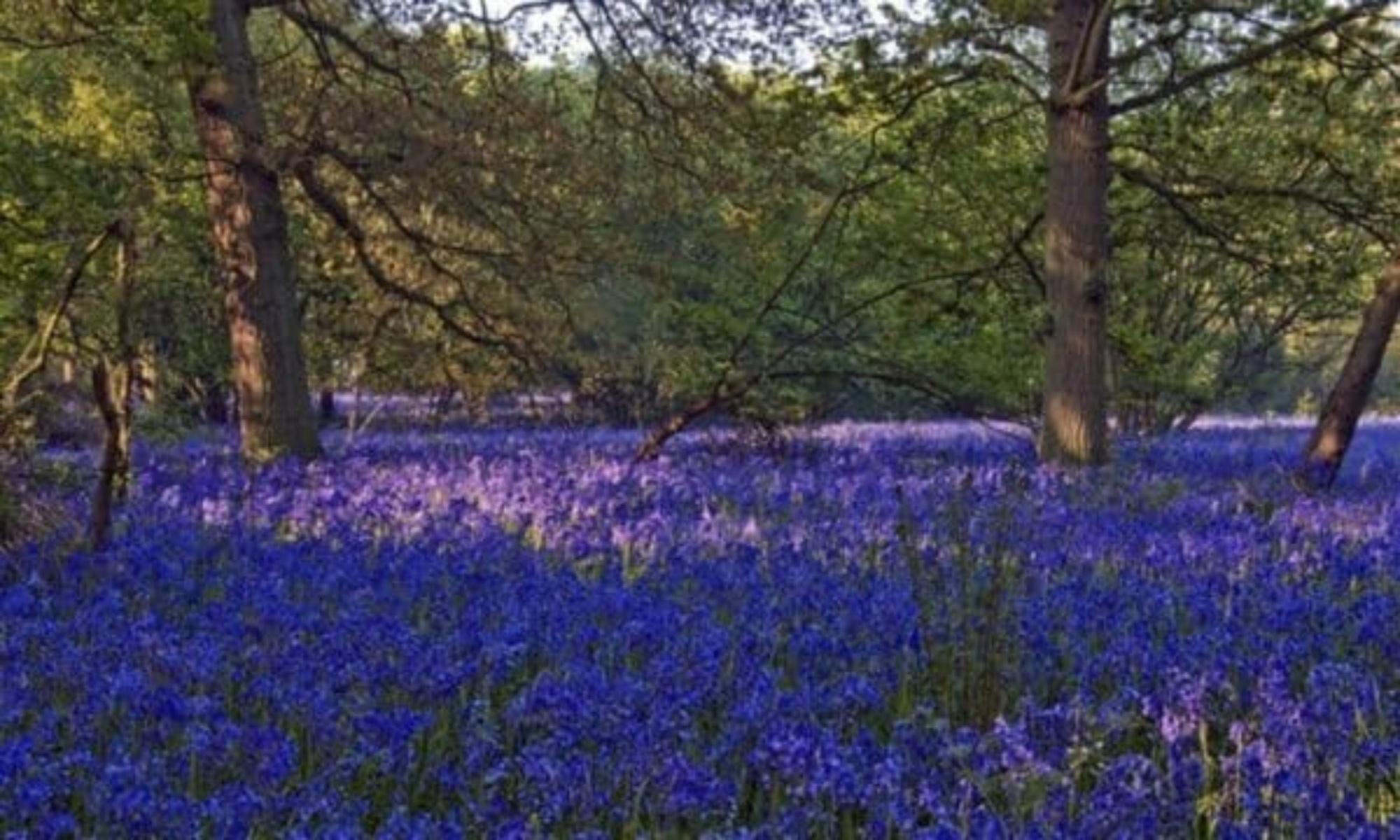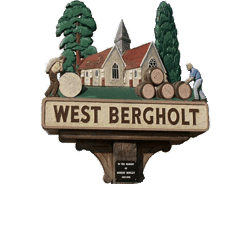The Fordham Country Trail
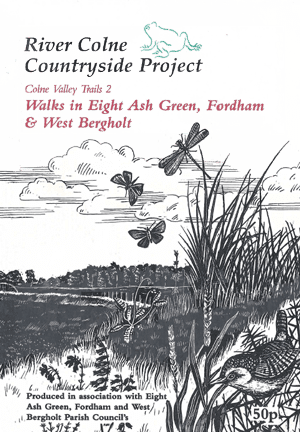
The Fordham Country Trail is one of 3 walks in the 2nd booklet produced by the River Colne Countryside Project (prior to 2013). Produced in association with local people & groups, this self-guided walk was originally marked out with way markers like those below. The River Colne Countryside Project is a joint venture between CBC and BDC; it is a partner in the Colchester Countryside Service.
If you would rather use a printed copy then please download the following PDF file. It will squeeze onto 1 page if printed double-sided.
Introduction
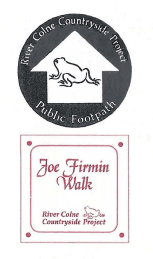
The village of Fordham takes its name from its old ford in the River Colne at Fordstreet; previous names, such as ”Forheda”, indicate that the settlement dates from Saxon times or possibly even earlier.
The village has many historical associations (did you know that all of its Iands were once given away by Henry VIII !) and a wealth of architectural interest, with over 30 listed buildings within the Parish boundary.
Today, the village has a population of c.830. Farming continues to be an important local industry and this walk takes you through the most attractive landscapes in the Parish. This route, which is approximately 4 miles, was devised in association with Fordham Parish Council. You can start the walk from the Fordham Hall Woodland Trust Car Park.
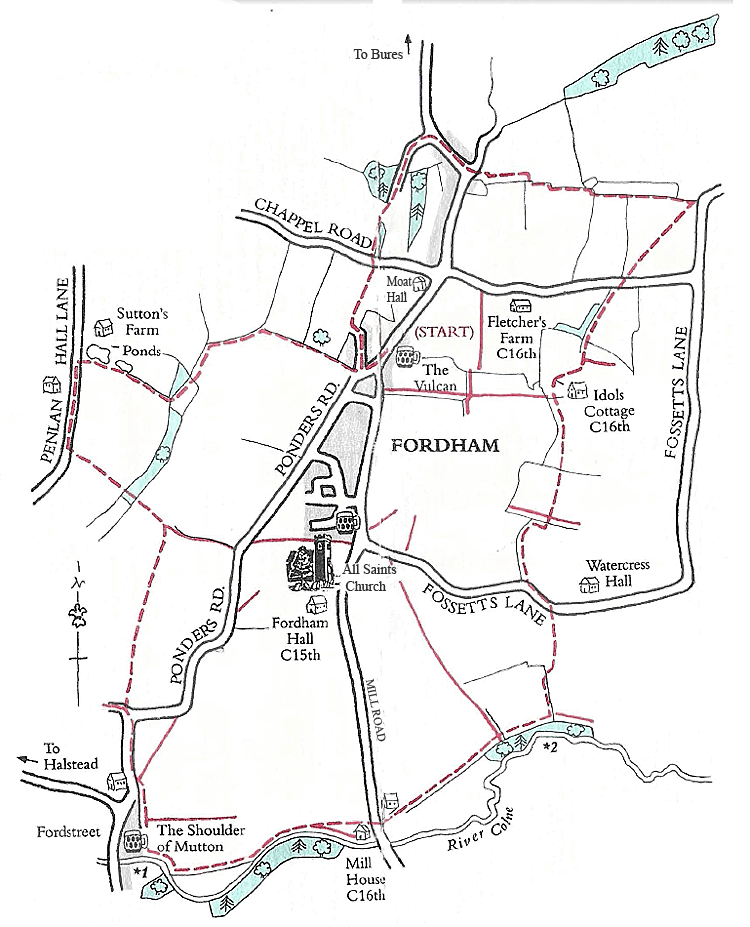
The Text & Original Images to Accompany the Walk
The River Colne

The River Colne rises south of Steeple Bumpstead and flows to the sea·at Brightlingsea. Here, between Fordham and Eight Ash Green, the river flows through a broad sweeping valley, which formed in this way at the end of the last ice age, 10,000 years ago.
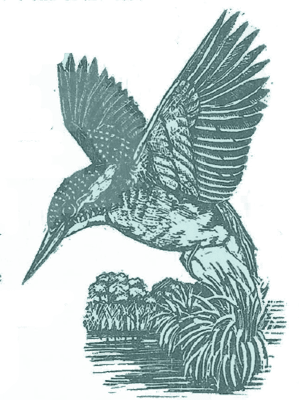
The steep-sided riverbank, provides good nesting sites for kingfishers. These beautiful birds can be detected by their high pitched whistling flight -call, but are usually just seen as a bright flash of colour. There are many fish species in the river at this point too, including roach, dace, perch and bream. These smaller fish are preyed upon by pike.
All Saints Church
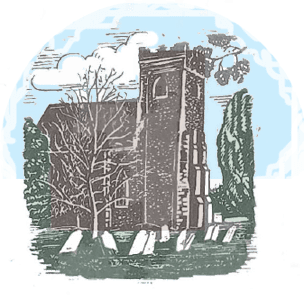
A visit to All Saints Church, though not on the route of the walk, is well worth the detour. The Church, a Grade 1 Listed Building, is built mainly of flint and rubble and it is known that it was rebuilt in 1340. However, the original building on the site dates from much earlier times and some roman brick can be found in the base of the tower. This prominent local landmark used to have an imposing spire; unfortunately the spire was toppled by a great storm in 1796 and was never replaced.
150 years earlier, the leaden roof tiles were stripped to make ammunition as the English Civil War engulfed the region. Evidence of repairs .can also be found, e.g. in the red brick of the Tower, repaired in 1700.
Today, the church is a peaceful place and the churchyard has been designated by Colchester Borough Council as a Site of Importance for Nature Conservation. Scarce plants found there include Lesser Calamint, Woodruff and Burnet Saxifrage.
